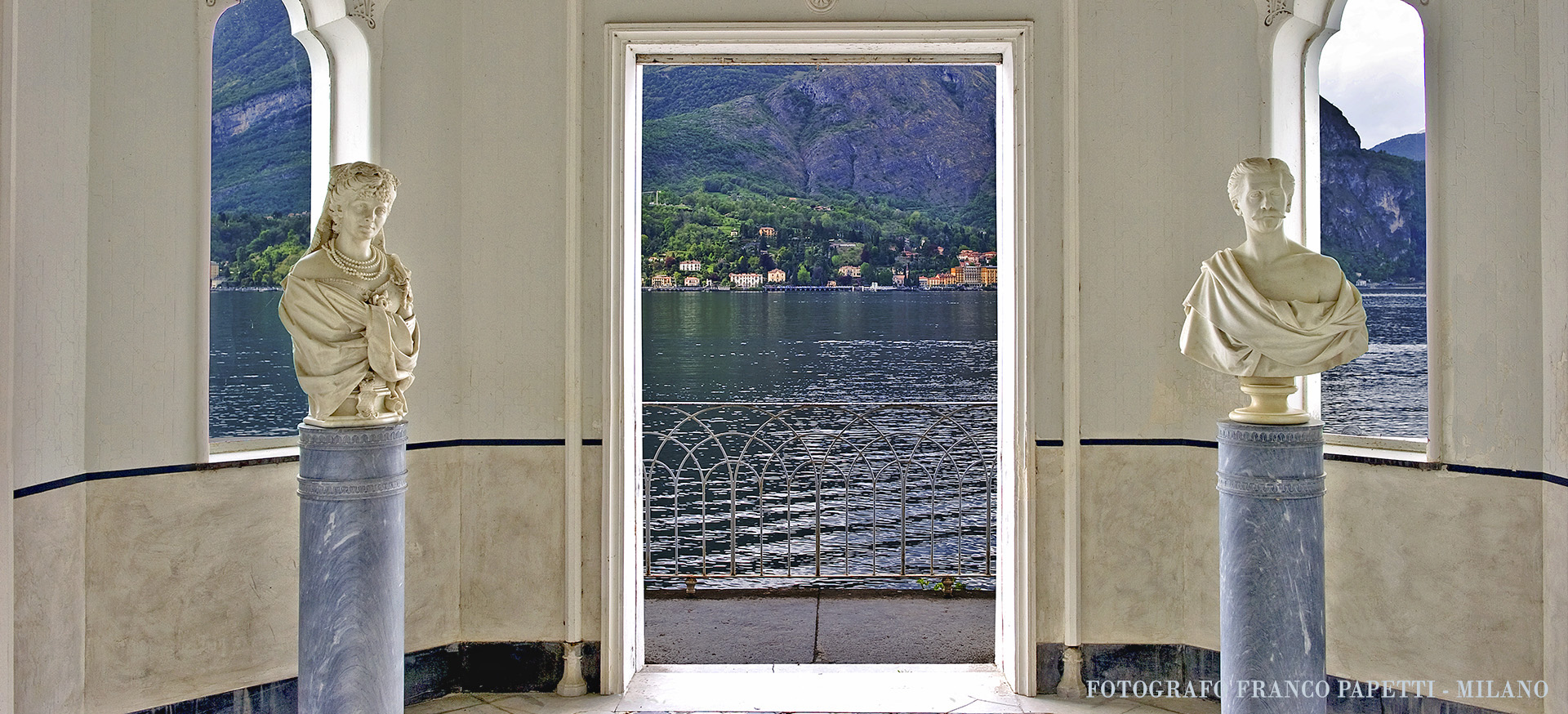
Our history
The Gardens of Villa Melzi d’Eril, among the most beautiful of Europe, rise along the shores of Lake Como near Bellagio, harmoniously inserted into the hilly landscape between the two branches of the lake.
Inside the Gardens stand the Villa, the Chapel and the Orange Greenhouse (or Orangérie), now a Museum of great historical relevance. The Gardens of Villa Melzi d’Eril are a splendid expression of the Neoclassical style, and have been declared a national monument.
The complex was created between 1808 and 1810 for Francesco Melzi d’Eril (1753-1816), Duke of Lodi, Vice-president of Napoleon’s Italian Republic and, later, Grand Chancellor of the Kingdom of Italy. Francesco Melzi d’Eril entrusted the design of the villa and of the Gardens to the architect and ornamentalist Giocondo Albertolli (1742-1839), one of the foremost exponents of Neoclassicism. His vision was of a sober and elegant Villa, with essential lines and volumes that would allow the splendid surrounding landscape to hold centre-stage.
The most renowned artists of the era contributed to the decoration and furnishings: as well as Giocondo Albertolli, designer of much of the interior decorations and furnishings, the painters Andrea Appiani (1754-1817), Giuseppe Bossi (1777-1815) and Alessandro Sanquirico (1777-1849), the sculptors Antonio Canova (1757-1822), Giambattista Comolli (1775-1830), Pompeo Marchesi (1789-1858) and the bronze smith Luigi Manfredini (1771-1840) contributed with their work.
The English gardens, embellished with sculptures, were designed by architect Luigi Canonica and the botanist Luigi Villoresi, who had both worked on the park of the Royal Villa of Monza.
Melzi d’Eril dwelt here until the end of his political career, after which it became his Summer residence until his death in 1816.
Thanks to the contributions of distinguished artists and craftsmen, and their special relationship with Francesco Melzi, the whole takes on a rare harmony, admired by Stendhal, among others, who described its beauty in Rome, Naples, Florence in 1817.

